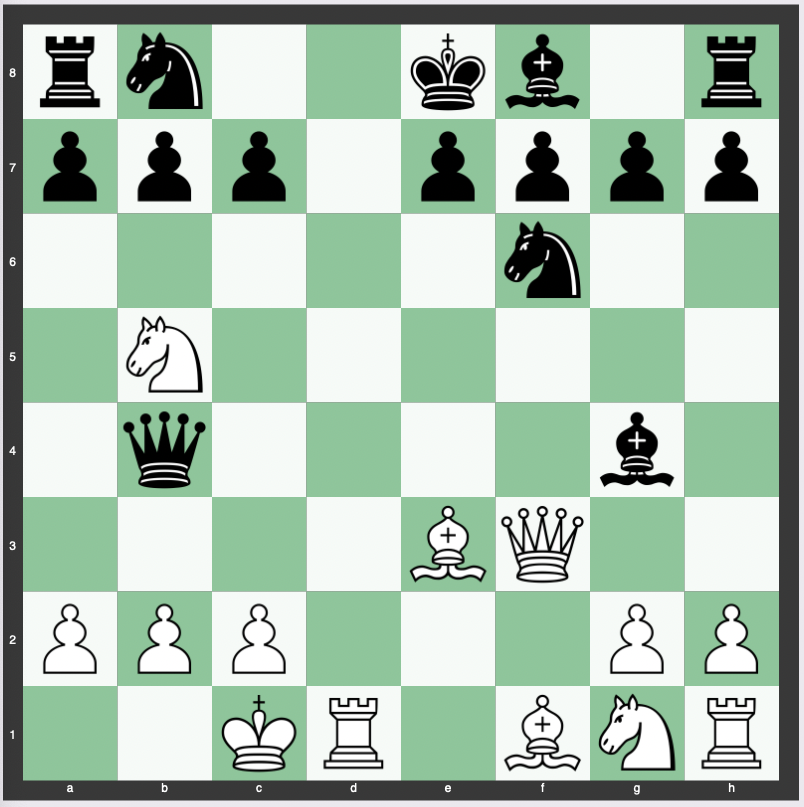The Halosar Trap is a tactical sequence in chess named after Hermann Halosar.
It arises in specific positions where White can create an immediate and decisive threat against Black’s king.
This trap has fascinated players for years, and it’s not only an interesting historical footnote but also a practical tool for players of different levels.
Let’s look into the details of this trap, exploring its move order, theory, variations, history, and its relevance for beginners and intermediate players, as well as its occurrence at the Grandmaster level.
Move Order of the Halosar Trap
The Halosar Trap typically occurs after the following sequence of moves:
1. d4 d5 2. e4 dxe4 3. Nc3 Nf6 4. f3 exf3 5. Qxf3 Qxd4 6. Be3 Qb4 7. O-O-O Bg4 8. Nb5!
At this point, White threatens mate with 9.Nxc7#.

The Black queen cannot capture the knight, and the line continues with variations that can lead to a complex battle.
Theory, Strategy, and Purpose of the Halosar Trap
The Halosar Trap is built around the tactical idea of exploiting Black’s misplaced pieces.
The sequence hinges on the mistake 7…Bg4?, which enables White to launch a counterattack.
White’s 8.Nb5! threatens a devastating checkmate and forces Black into a defensive posture.
The trap illustrates the importance of careful piece coordination and the dynamic possibilities that can arise in the game.
Variations of the Halosar Trap
Several variations emerge from the Halosar Trap:
8…Na6
9. Qxb7 Qe4 (Black lost in Diemer–Halosar, Baden-Baden 1934, after 9…Rc8 10.Qxa6).
10. Qxa6 Qxe3+ (Worse is 10…Bxd1 11.Kxd1 Rd8+ 12.Bd2 and White is winning, for example, 12…Ng4 13.Nxc7+ Kd7 14.Qxa7).
11. Kb1 Qc5
12. Nf3
Though White has some advantage, Black can avoid immediate loss if played accurately.
History of the Halosar Trap
Named after Hermann Halosar, the trap was famously played in the game Diemer–Halosar in Baden-Baden, 1934.
The sequence has become part of chess lore, demonstrating both the beauty and peril of chess tactics.
Is the Halosar Trap Good for Beginners or Intermediates?
The Halosar Trap offers value for both beginners and intermediate players.
For beginners, it helps in understanding tactical themes and the importance of piece placement.
For intermediates, it may serve as a practical weapon in specific openings.
Halosar Trap – Opening Traps
How Often Is the Halosar Trap Played at the Grandmaster Level?
While the Halosar Trap is a notable sequence, it’s practically never seen at the Grandmaster level.
Top players are often aware of such tactical motifs and are unlikely to fall into the trap.
However, studying it can still provide insights into the tactical nature of chess.
Conclusion
The Halosar Trap is a fascinating and instructive tactical sequence that underscores the beauty of chess tactics.
While it may not frequently occur in top-level play, its principles, themes, and variations offer valuable lessons for players at various stages of learning.
From its historical significance to its practical applications, the Halosar Trap continues to be an interesting aspect of the rich variety in chess.
Whether you’re a beginner learning the ropes or an intermediate player looking to sharpen your tactical skills, exploring the Halosar Trap can provide insights and enjoyment in your chess journey.
Related


